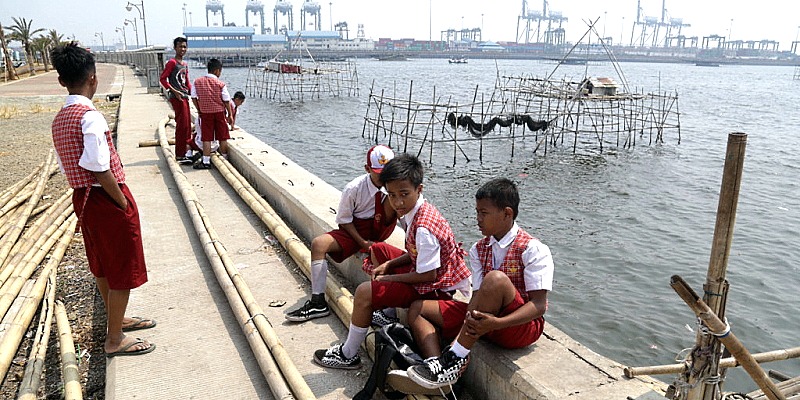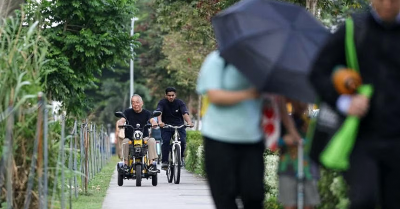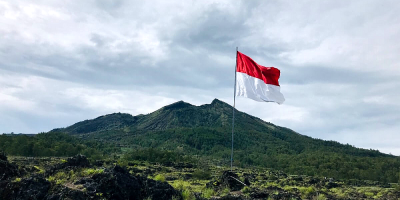
Ahead of the United Nations Climate Change Conference on Climate Change (COP27), Indonesia had to face 76 climate-induced disasters between Oct. 10 and Oct. 16 that left 13 people dead and affected over 70,000 others in 21 provinces, according to the National Disaster Mitigation Agency (BNPB).
In this year alone, extreme meteorological and climate events have claimed more than 200 lives and injured over 800 and displaced over 3 million others, based on the BNPB’s data. With the BNPB predicting a longer rainy season this year, Indonesia will need to work hard to prevent further disasters from occurring.
The poor are more likely to be the hardest hit as they live in conditions that make it difficult for them to cope with weather shocks and extreme temperatures. They own few assets and have limited access to capital. They also depend on sectors that are sensitive to climate change like agriculture and fisheries, and live in areas more susceptible to climate change, such as coastlines.
Researchers also found that economic well-being is intertwined with the weather. A 1 degree Celsius increase in maximum temperature decreases real per capita expenditure by around 0.4 percent, while 10 additional days when the maximum temperature is higher than 34 degrees slashes it by almost 4 percent. Similarly, 10 extra days delay in monsoon onset lowers real per capita expenditure by 0.1 percent.
The adverse impacts of climate change on Indonesia will continue to increase in the coming decades. A recent United Nations Environment Program (UNEP) report states that the world will witness a temperature rise of between 2.4 and 2.6 degrees by the end of this century as it stands today – much higher than the previous 1.5-degree target.
Such risks associated with climate change call for better climate change protection for the poor as Indonesia will attend the COP27 in Sharm El-Sheikh, near Cairo, on November 6-18.
Holding the Group of 20 presidency and being the 2023 ASEAN chair, Indonesia needs to capitalize on its strategic position in the COP27 to lead climate efforts through concrete actions.
Particularly, Indonesia needs to step up its climate-adaptation efforts. The UN Framework Convention on Climate Change (UNFCCC) says countries and communities need to develop adaptation solutions and implement actions to respond to the impacts of climate change that are already happening, as well as to prepare for future impacts.
Indonesia currently adopts climate adaptation by including disaster and climate resilience among its priority programs in its National Medium-Term Development Plan (RPJMN). The government then published the Climate Resilient Development (PBI) 2020-2045 document – previously known as Climate Change National Action Plan (RAN-API) – as a guideline to implement climate adaptation.
The PBI maps out the necessary institutional arrangements, funding, non-government actors, as well as the monitoring, evaluation and reporting necessary for climate adoption. It lists four priority sectors – water, agriculture, health, and marine and coastal – and identifies priority areas for each sector.
The preliminary results of evaluation by the National Development Planning Agency (Bappenas) of 170 climate-resilience actions across ministries and government agencies through the PBI seem promising. It found that these actions can reduce economic losses by Rp 44 trillion (US$2.8 billion) in 2020. It also estimated that climate-resilience actions can reduce economic losses by Rp 281.9 trillion during the 2020-2024 period.
However, the government may struggle to protect the poor in such actions if it does not consider the causes of social vulnerability. Individuals and communities have different levels of access to resources, coping capacity and recovery capacity, as cited in 2021 research. As such, comprehensive vulnerability assessment is necessary, especially at the local level to better understand the causes of social vulnerability, which are often context specific.
Furthermore, as noted by the 2021 Intergovernmental Panel on Climate Change (IPCC) report, there is increasing evidence of adaptation actions that further deepen existing social inequities and lead to adverse outcomes – which is widely known as “maladaptation.”
One example of maladaptation is the Great Garuda Project in Jakarta – a residential area on reclaimed land – that has not only failed to address the root causes of floods in Jakarta but also left the city and its residents more vulnerable to climate change impacts than they currently are.
According to the same IPCC report, one way to minimize maladaptation is to push for planning that has flexible pathways and that is multi-sectoral, multi-actor and inclusive. In other words, a plan that accounts for the time it takes to adapt, the uncertainty about the rate and magnitude of climate risk and the wide range of potentially adverse consequences of adaptation actions can minimize the risks of maladaptation.
Climate-resilience efforts will also be less effective if other “green” policies contradict adaptation goals. Indonesia’s efforts to convert to biofuels – such as the REDD+ in Central Kalimantan and Merauke Integrated Food and Energy Estate in Papua – have resulted in land expansions that drove farmers and local communities away from their land, including those living in poverty.
Therefore, at a macro level, the government must identify potential contradicting policies and align them with the PBI goals. Bappenas through the Low Carbon Development Initiative (LCDI) should lead and monitor such efforts to ensure that each ministry and agency do not hinder climate adaptation efforts. Indonesia will also need to invest more on knowledge production to deal with climate change issue to ensure that climate policies are evidence-based.
In the long run, political commitments to follow through Indonesia’s adaptation plan will be essential to ensure a climate-resilient future. As world elites gather for COP27, Indonesia should move beyond planning into implementation to ensure the poor can cope with climate change.
(Sudarno Sumarto is senior research fellow at the SMERU Research Institute and policy adviser to the National Team for the Acceleration of Poverty Reduction (TNP2K), Office of the Vice President. Made Anthony Iswara is a junior researcher at the SMERU Research Institute.)
ADVERTISEMENT
ADVERTISEMENT








































